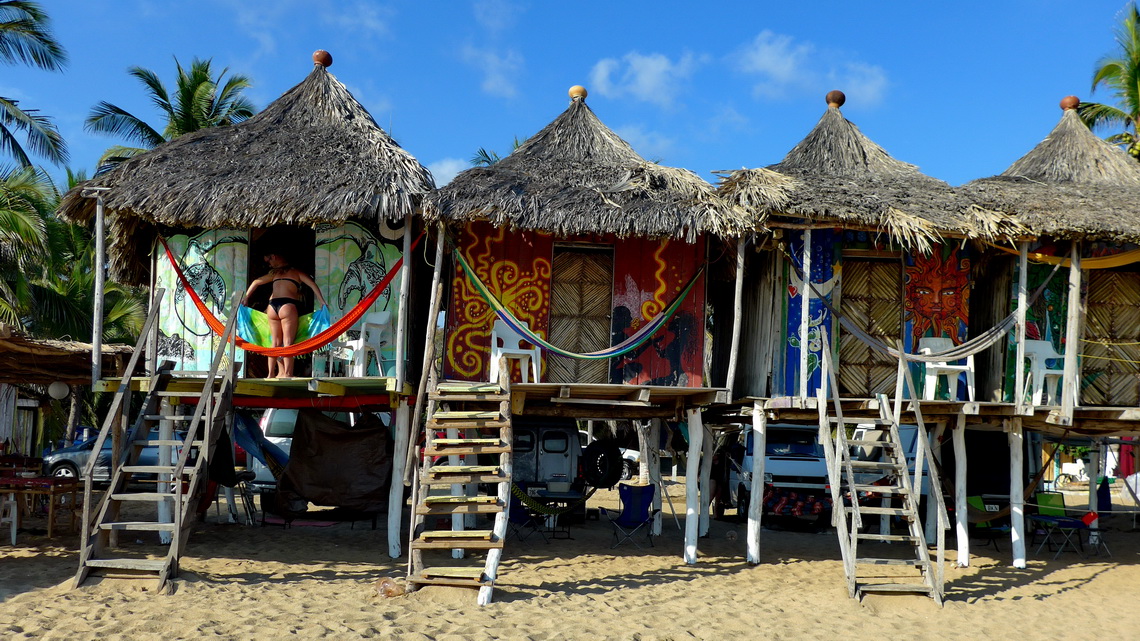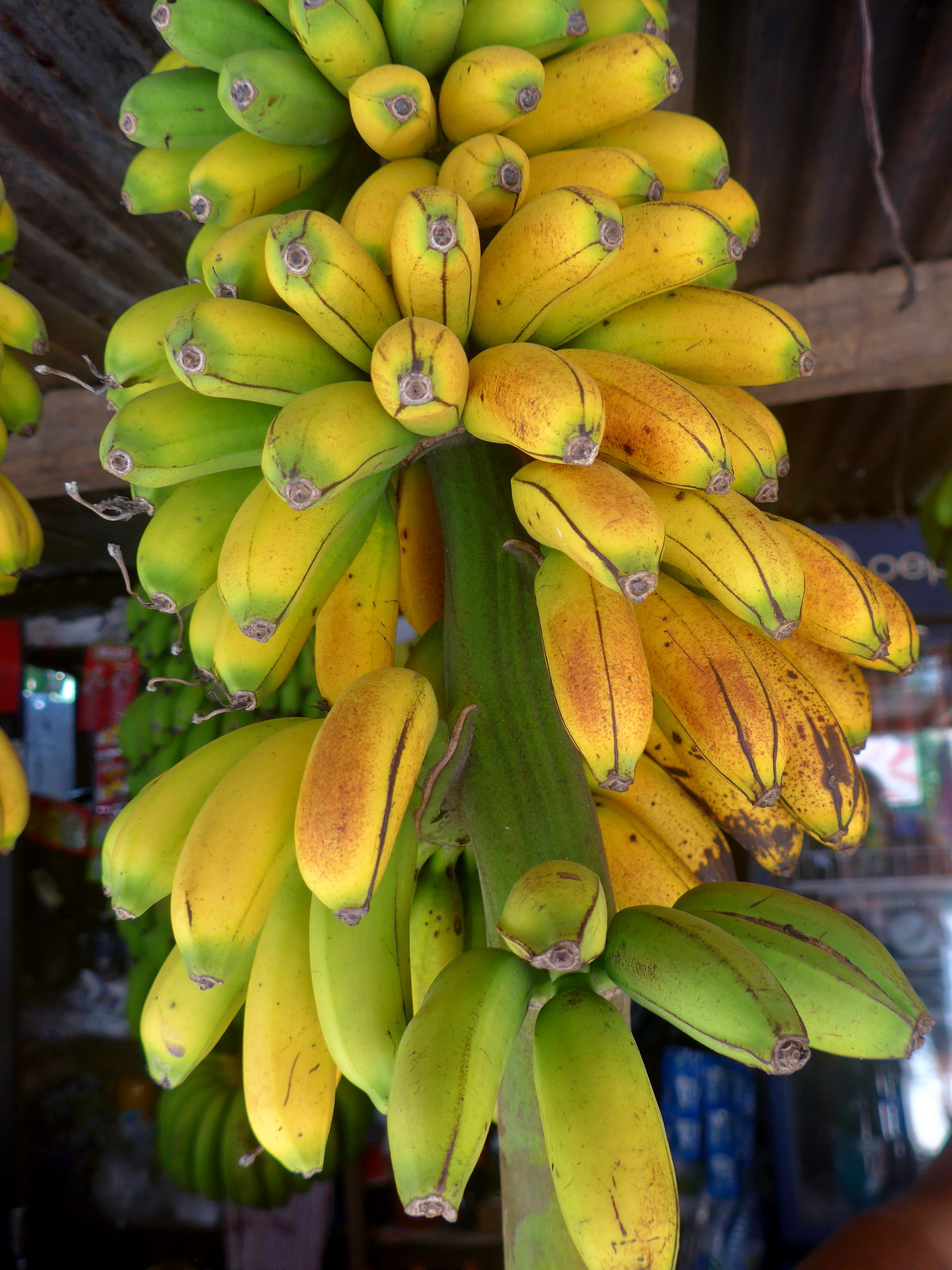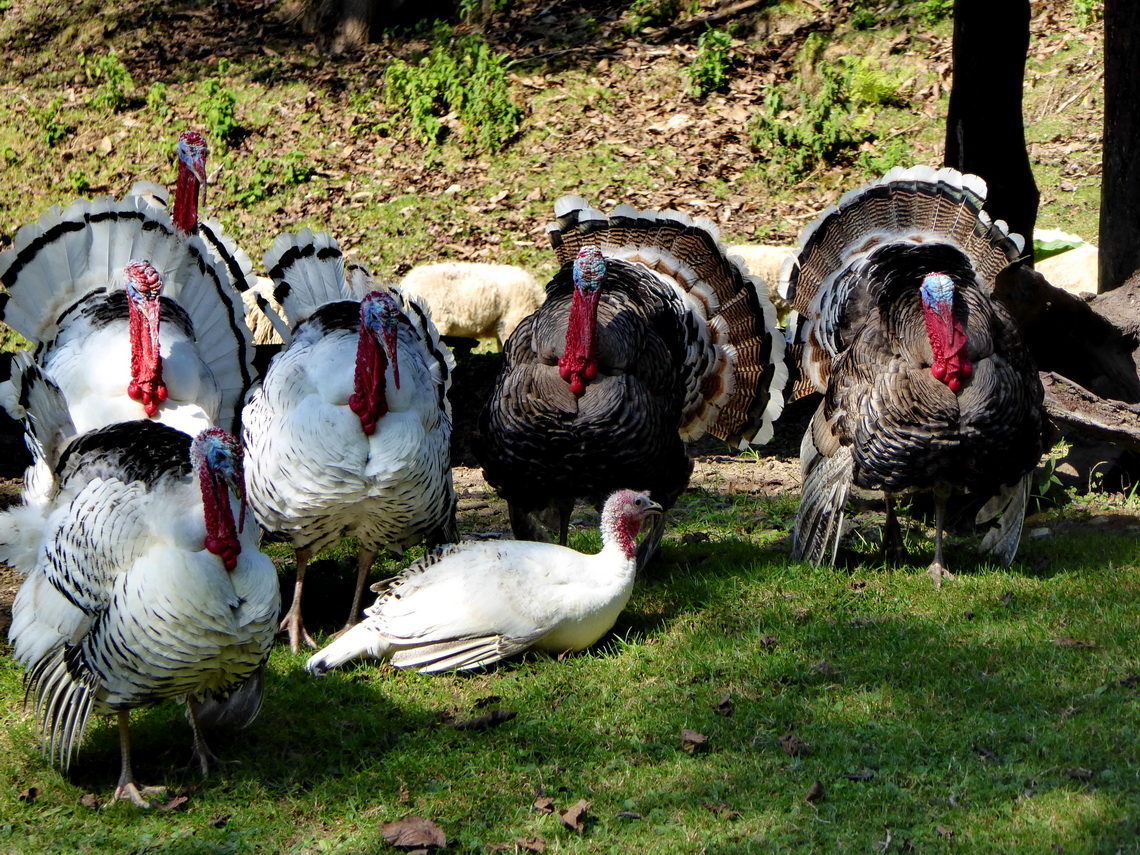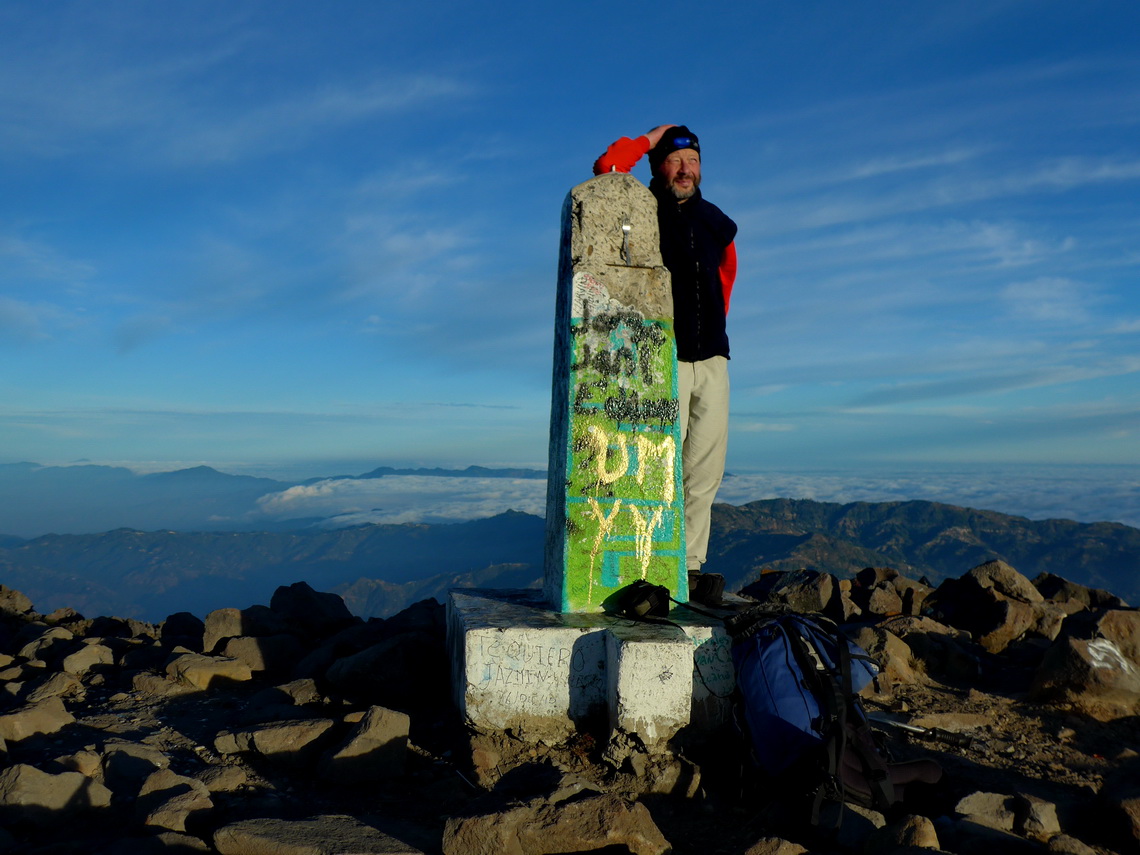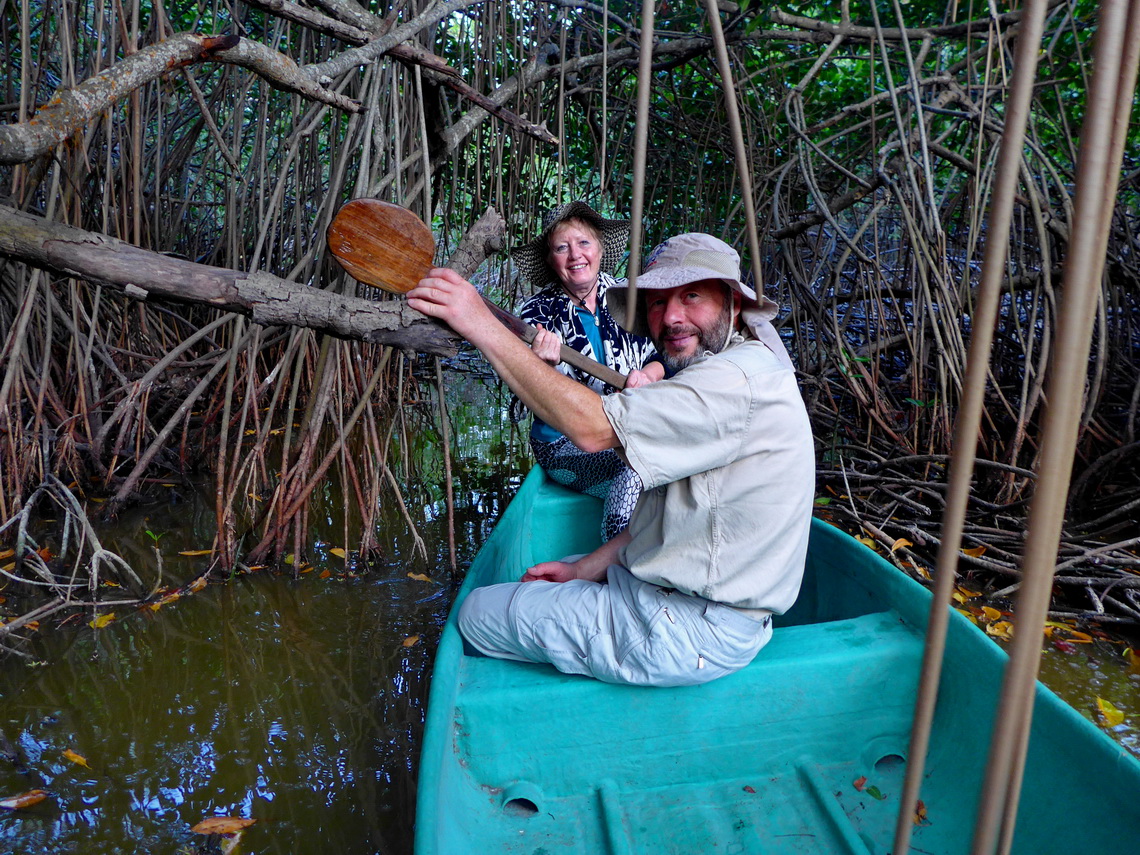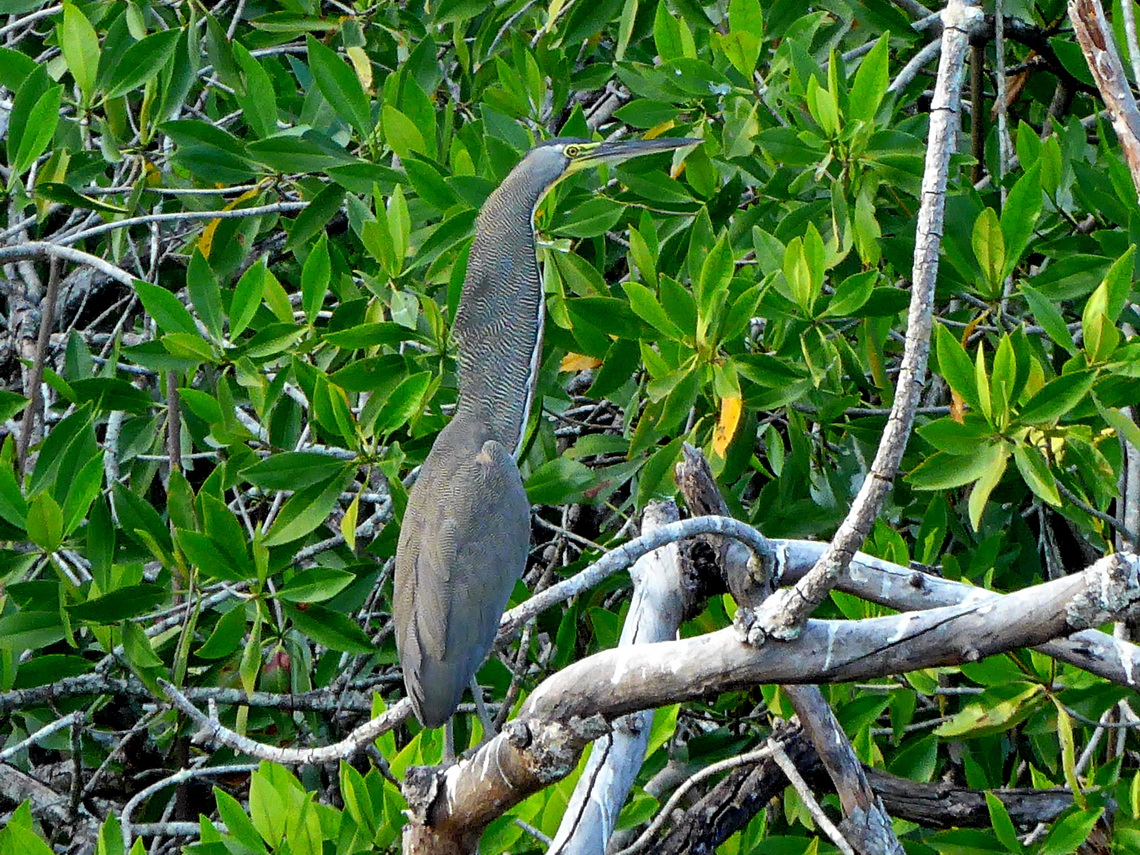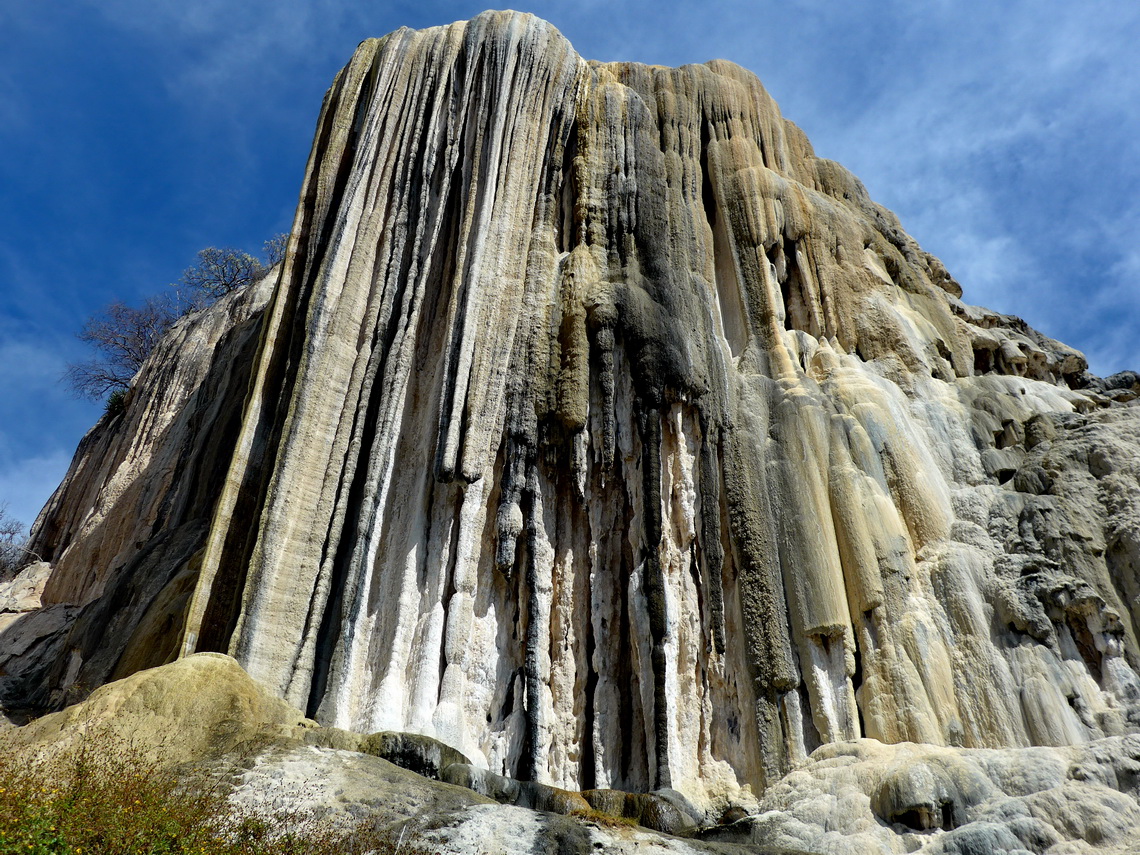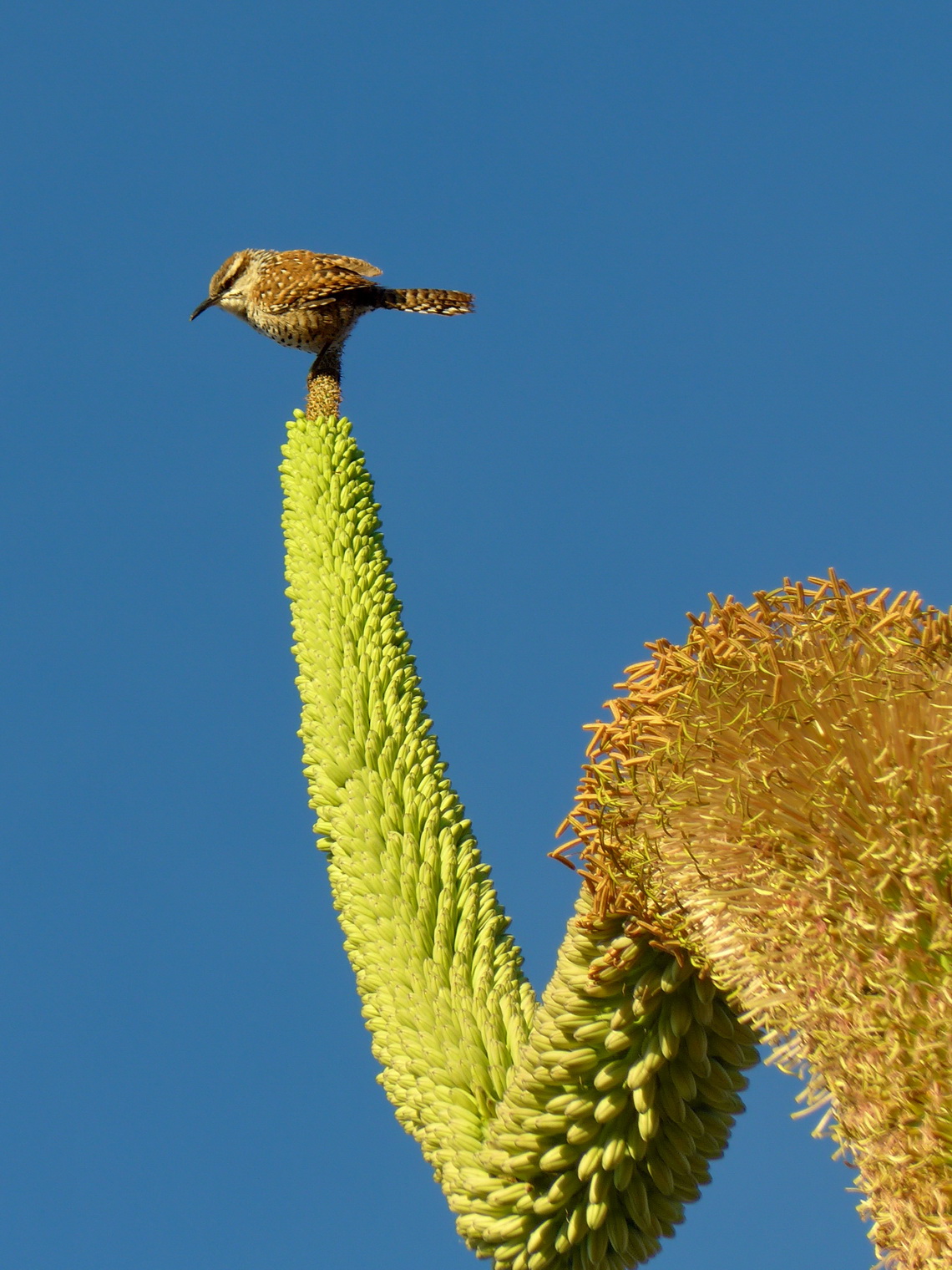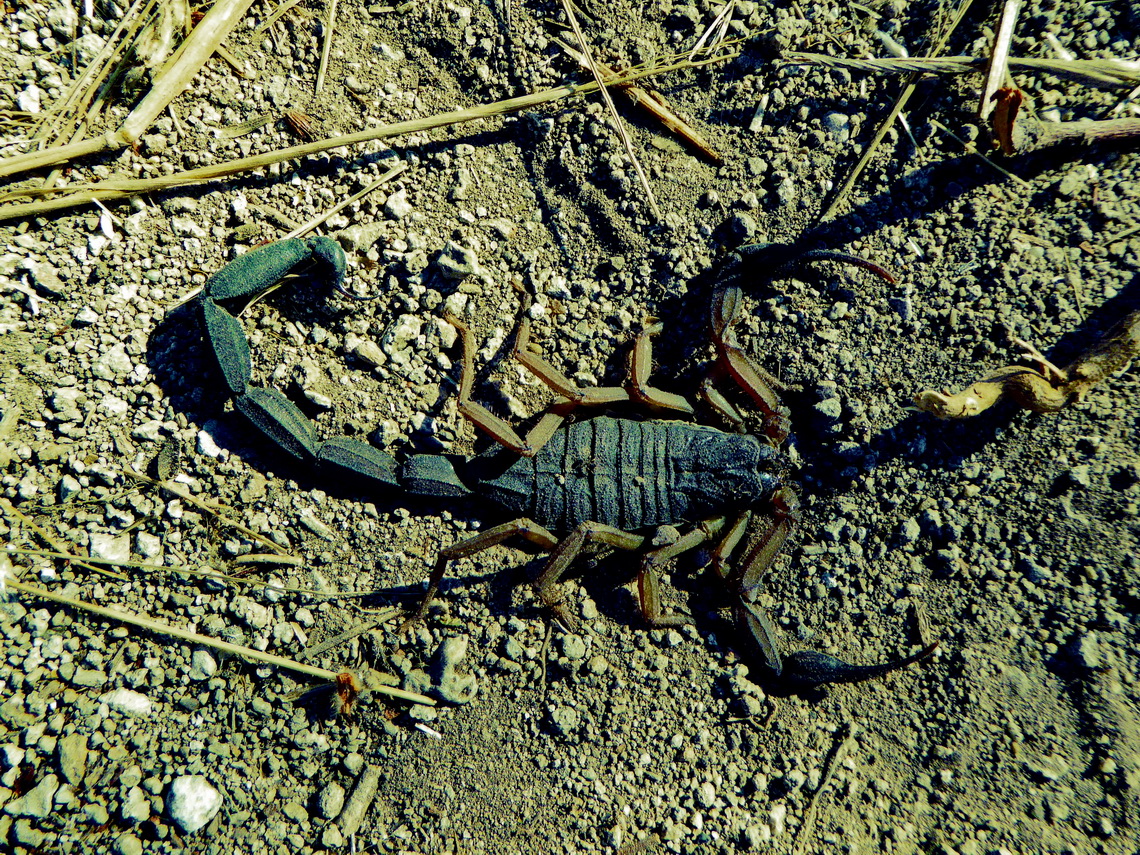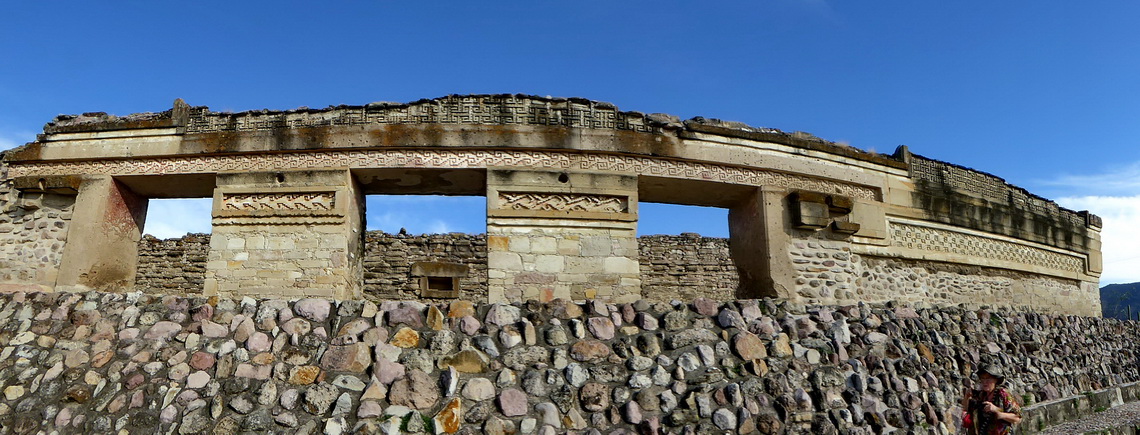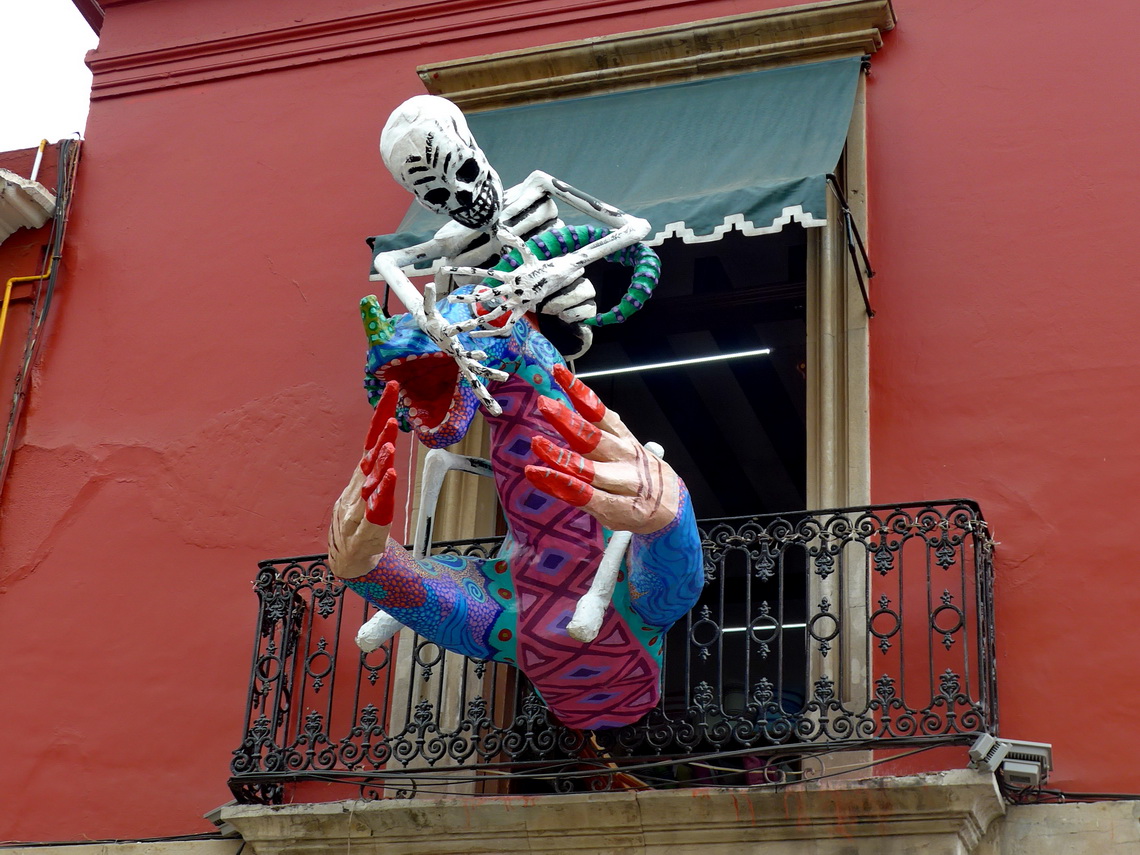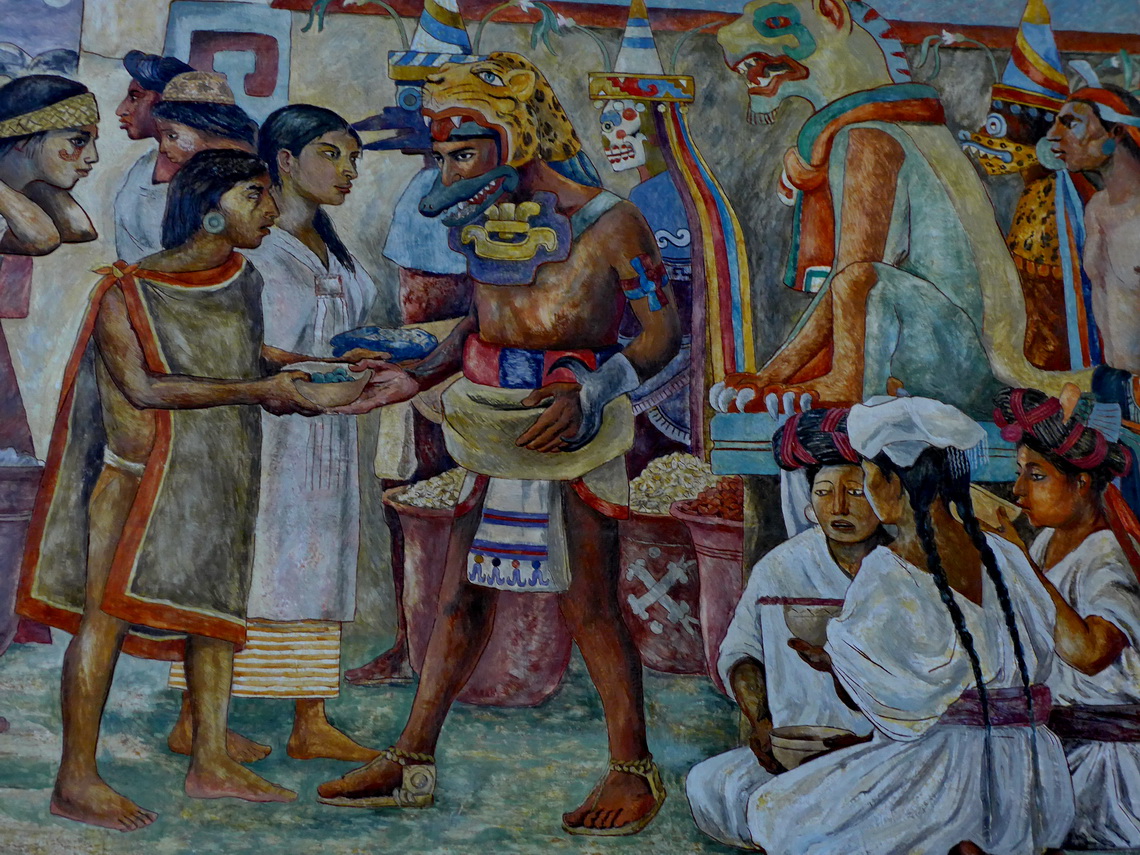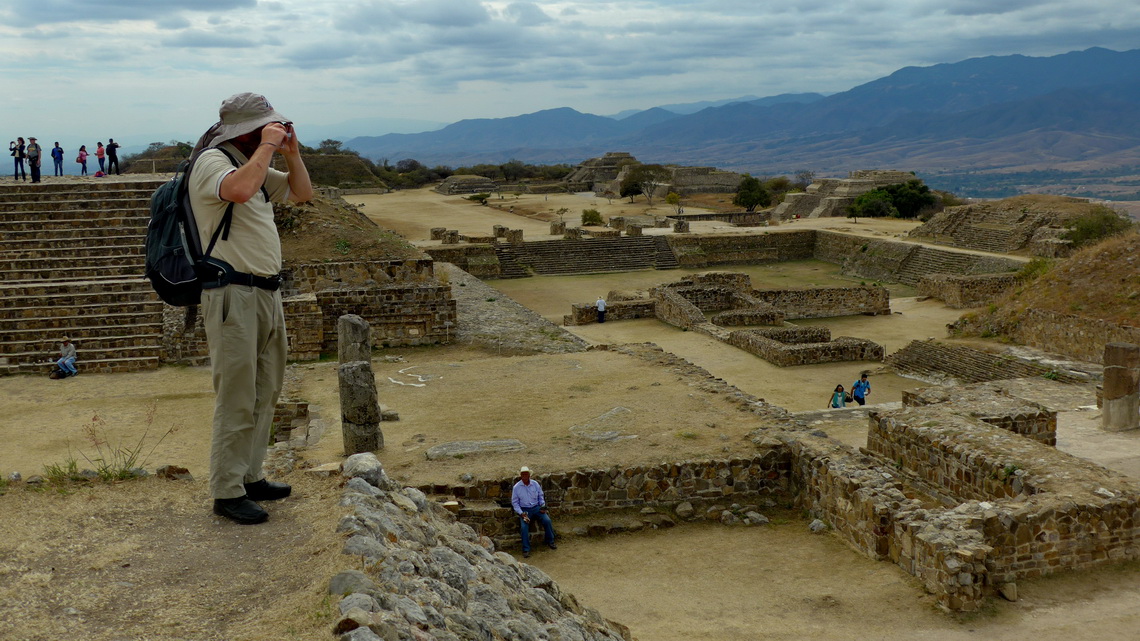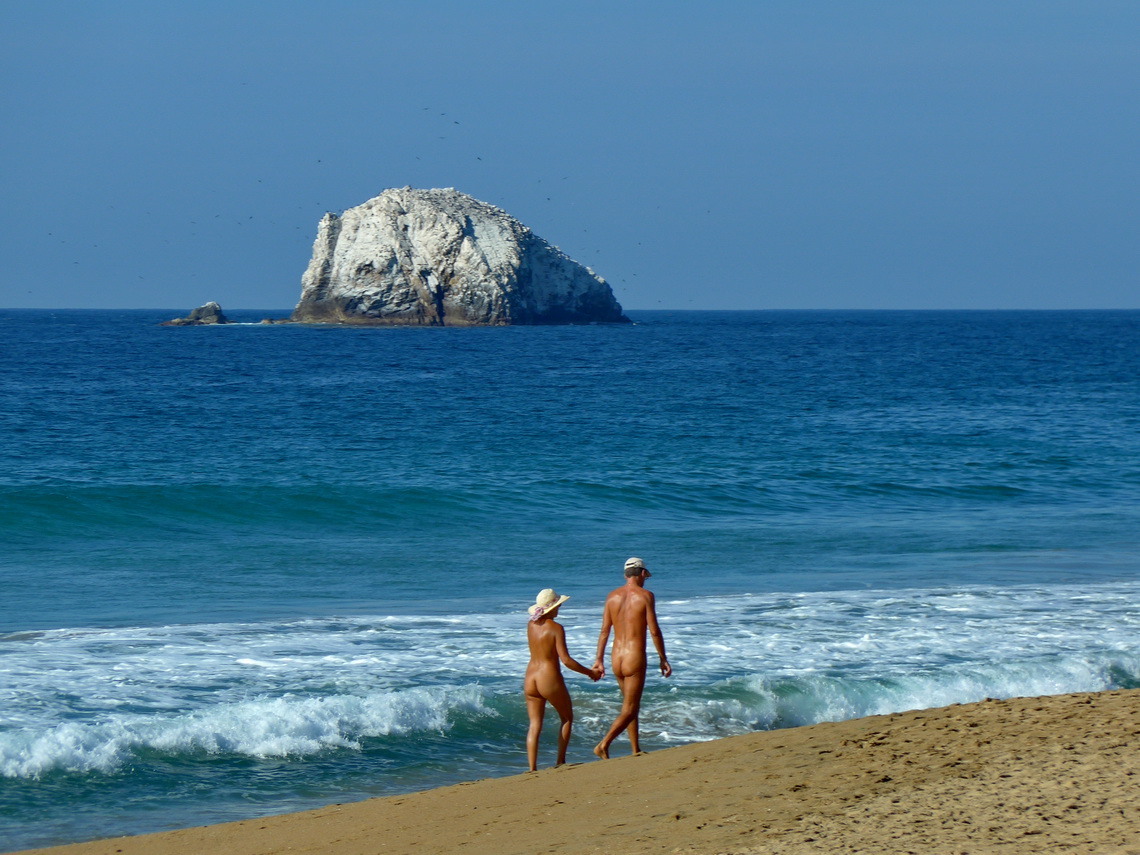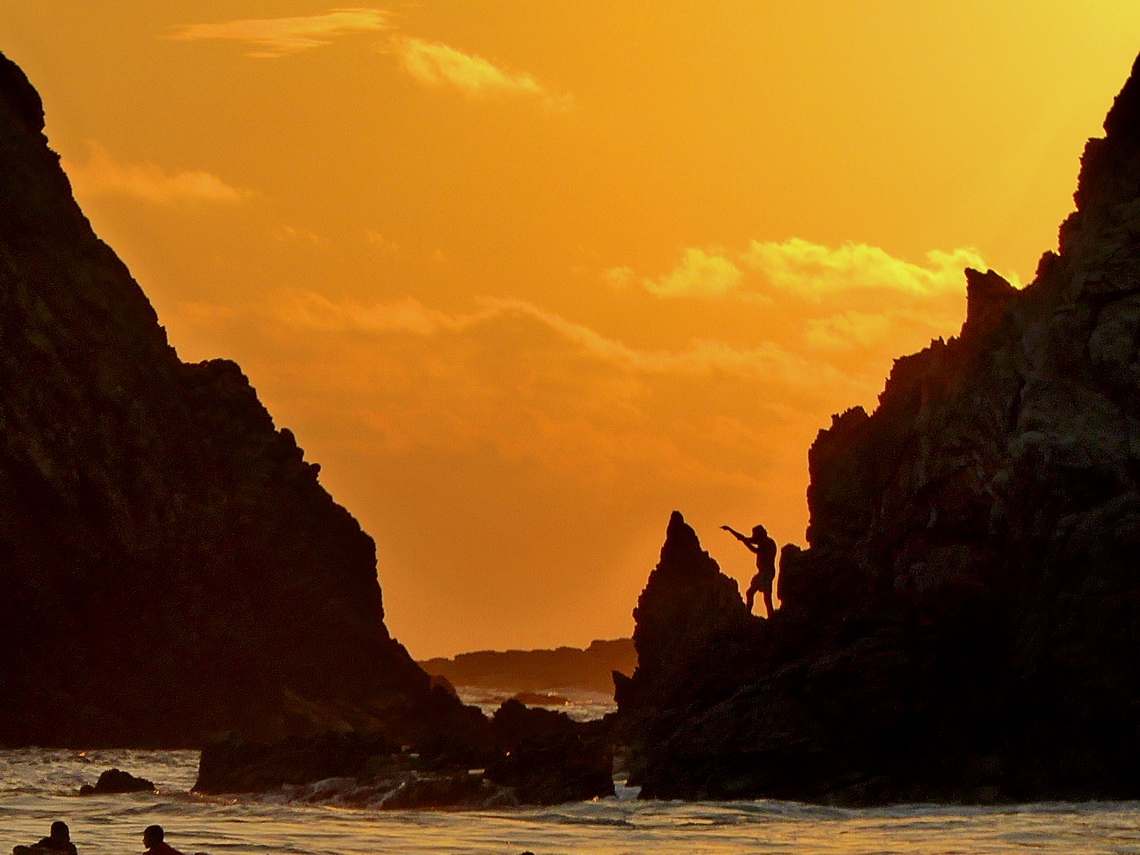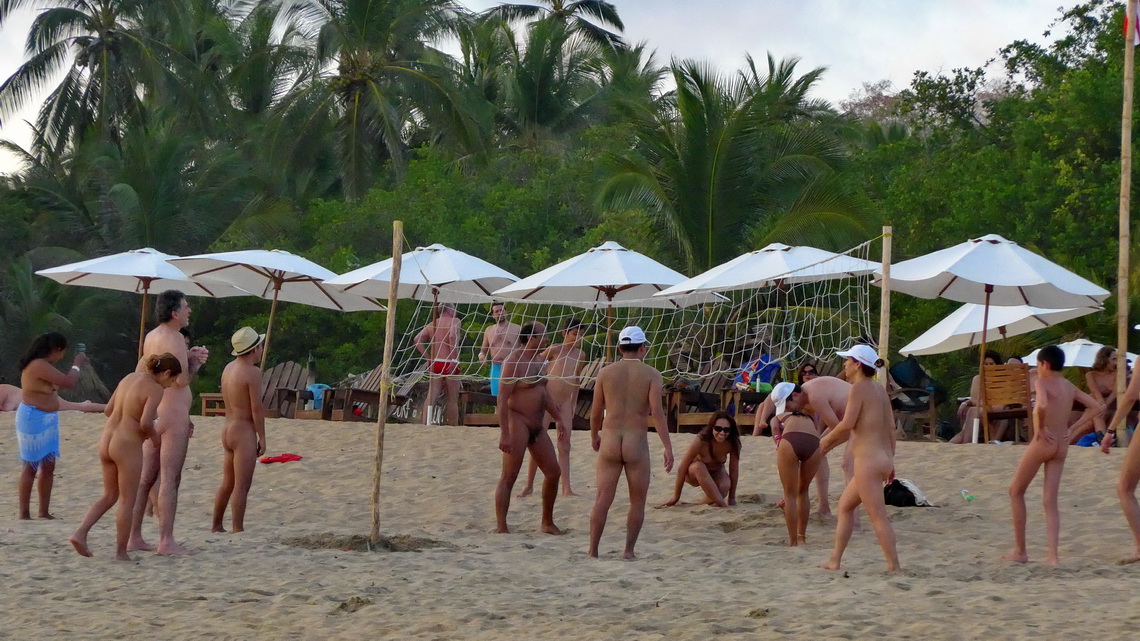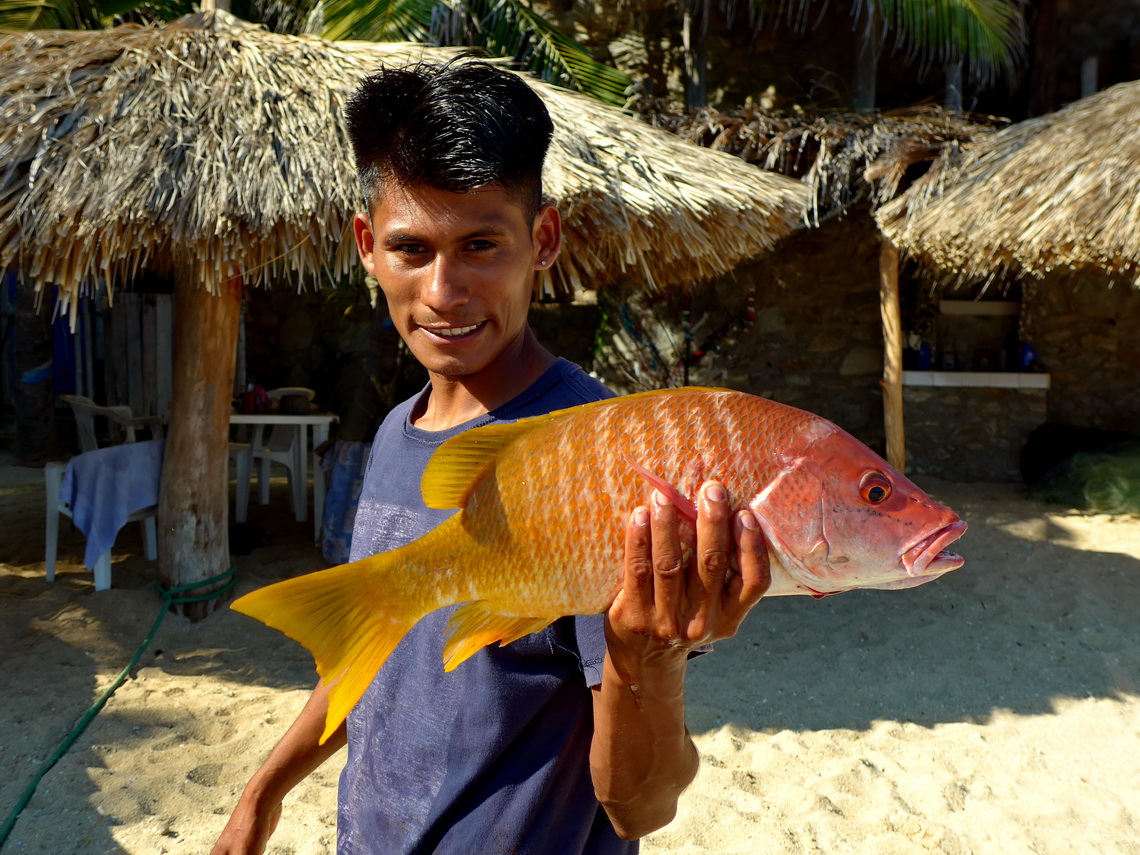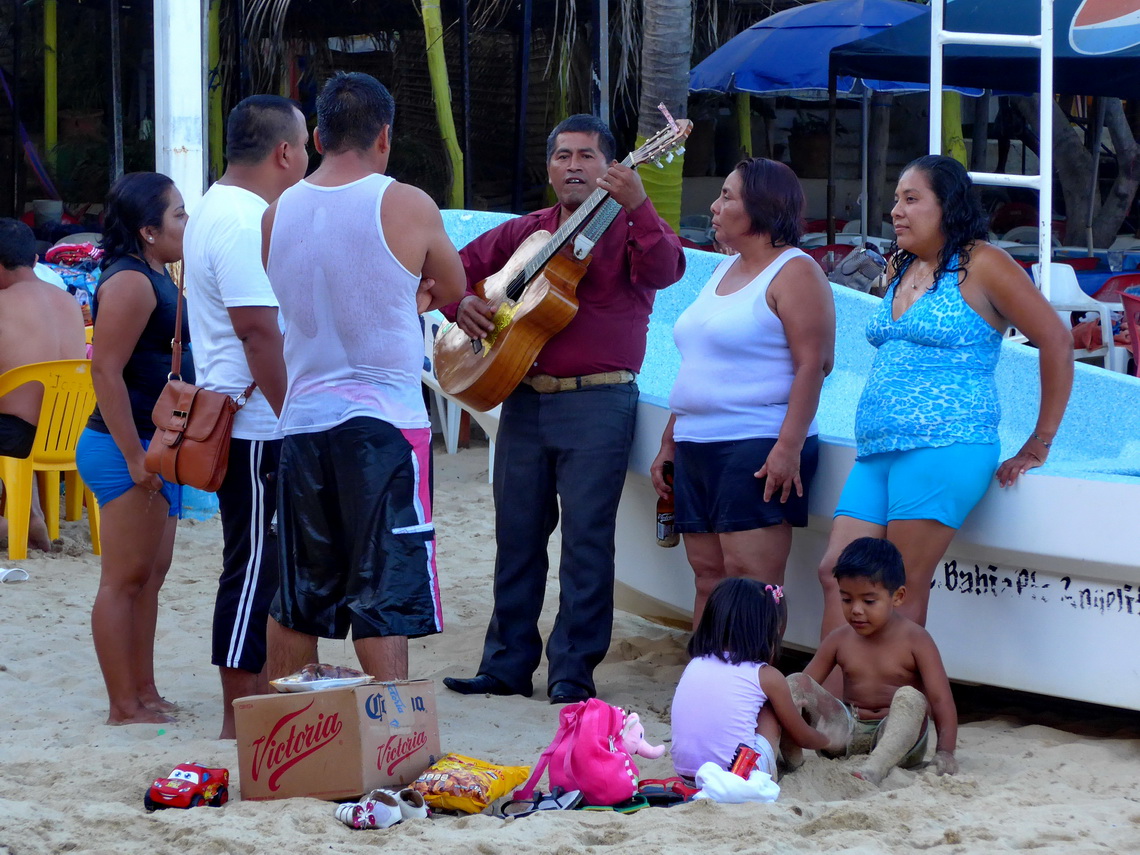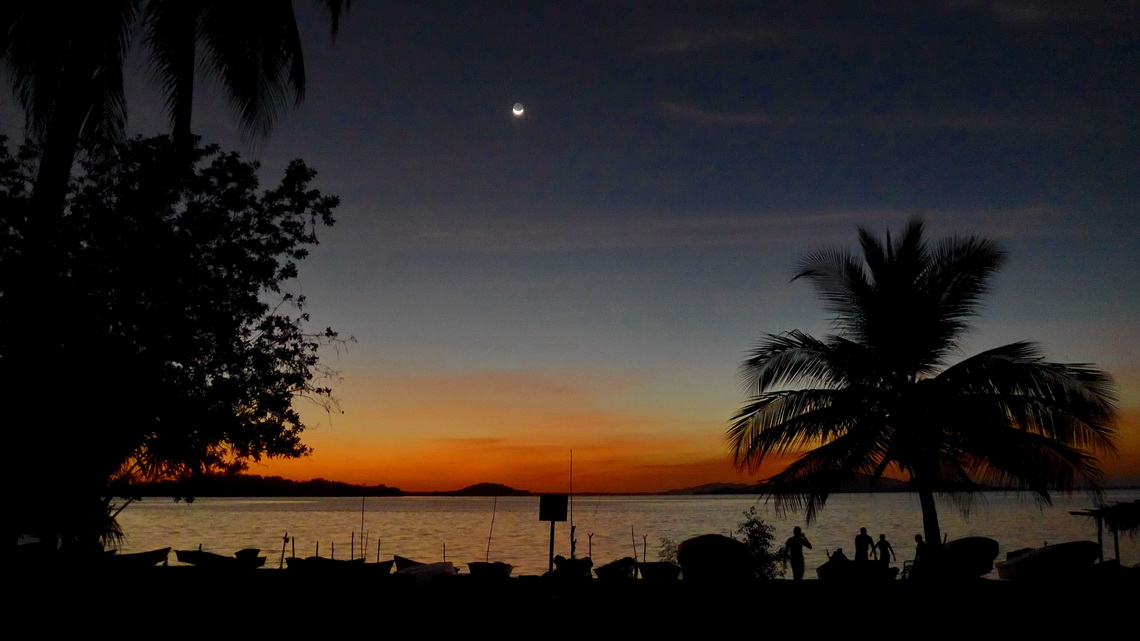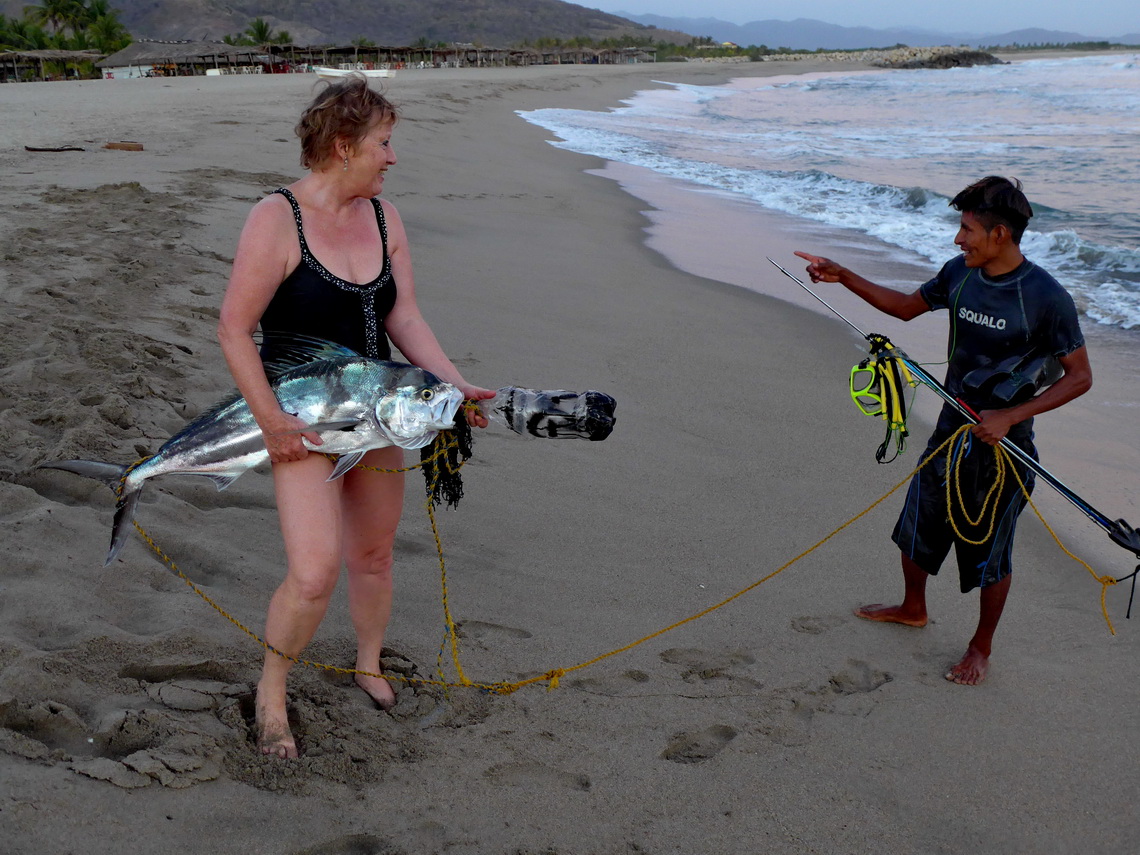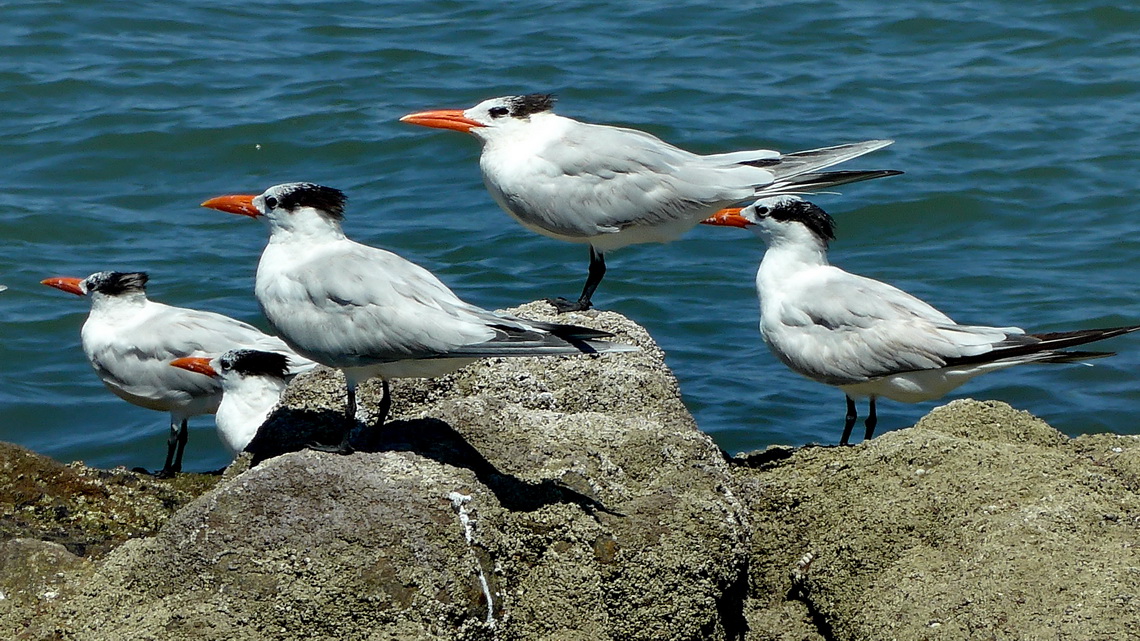Mexico's beautiful southeastern state Oaxaca is very diversified: It has rugged mountains, spectacular pre-Columbian ruins, different indigenous people with various languages, rich flora and fauna, marvelous and deserted beaches on the Pacific ocean.
Before we came to Oaxaca we crossed the southern part of Chiapas and climbed up its highest mountain, Volcan Tacaná (4093 meters sea-level) which is located directly on the border between Mexico and Guatemala. Our arrival in Chiapas was weird, again (see article Chiapas Central and East). This time we had no issues with the Mexican customs.
Union Juarez is a good base town for the ascent to Volcan Tacaná. It is located few kilometers north of Talisman, the border town to Guatemala. Thanks to the local Police we found a nice and secure campground on the parking lot of the Hotel Hospedaje el Mirador (GPS coordinates: N15° 04.260' W92° 04.904') on the steep upper street to the village Taliquan. It is just 1440 meters high and thus we decided to take our tents and camp on the way to the summit. When we organized our stuff we heart suddenly people screaming followed by a hefty bang. A pick-up packed with people crashed into the power pole just 50 meters in front of us - failure of the brakes. We did some first aid and helped the injured people and kids until Police came.
Early next morning we took a taxi to the start of the trail to Volcan Tacaná in the nearby village Taliquan (GPS coordinates: N15° 05.389' W92° 04.996') and hiked several hours with heavy backpacks the route La Linea to our base camp above the Guatemalan village Sibinal at 3082 meters sea-level (GPS coordinates: N15° 07.225' W92° 05.667'). There are several shops in Sibinal where water and other stuff can be purchased.
The path to the summit leads to the flat plateau Plan de las Ardillas at 3675 meters sea-level (GPS coordinates: N15° 07.787' W92° 05.856') and continues via the Mexican side of the mountain to the summit of Volcan Tacaná. We saw few people camping on Plan de las Ardillas but we were totally alone on the highest peak of Chiapas and second of Central America. Our track is included in the GPS coordinates files of Oaxaca and Chiapas.
Jose's campground in Puerto Arista is outstanding (GPS coordinates: N15° 55.888' W93° 48.048'). It is located directly on a lagoon with extensive bird life few meters away from the beach. The Canadian Jose has kayaks to rent for little money and he gave us valuable recommendations where to go.
The nice swimming pools of Balneario Ojo De Agua Tlacotepec (GPS coordinates: N16° 32.141' W95° 12.087') are a good place to spent a cooler night in the hot plain of the Isthmus of Tehuantepec, which marks the geographically border between Central and North America; and Chiapas and Oaxaca. A security guard with a gun allowed us to stay directly in front of a pool. After sunset we were totally alone besides the guard. When we wanted to sleep an expensive and trendy car came with two younger couples. They started drinking a lot of vodka, continued into the pools and again voided some bottles of heavy stuff. They were screaming unpleasantly loud, crashing the glass bottles and fortunately ignored us. The security guard did not interfere. After one hour a boy was unconscious and his girl friend tried to awake him by hitting him and crying desperately. Like our security guard we did not dare to interfere. In the early morning the engine of the car started and the two couples disappeared.
The street MEX190 winds endless to Oaxaca City, located in the highlands at approximately 1600 meters sea-level. Before we came to Oaxaca we visited the marvelous springs Hierve el Agua with its petrified waterfalls. Camping is permitted directly on the edge of the valley (GPS coordinates: N16° 52.011' W96° 16.590'). Close are the Zapotec ruins Mitla and the tree Arbol El Tule which is supposed to be one of the biggest single biomass on earth.
Oaxaca City is a bustling metropolis with a lot of churches and some nice places. Unfortunately we were one of the last people staying in its handy trailer park in walking distance from its center because office buildings were going to be constructed, soon. We stayed also on two other campsite few kilometers in the east of Oaxaca City: The fair campsite Overland Oasis with limited space driven by a Canadian couple in El Tule (GPS coordinates: N17° 02.684' W96° 38.405') and the new huge Oaxaca campground managed by an US / Canadian couple (GPS coordinates: N17° 01.822' W96° 35.843').
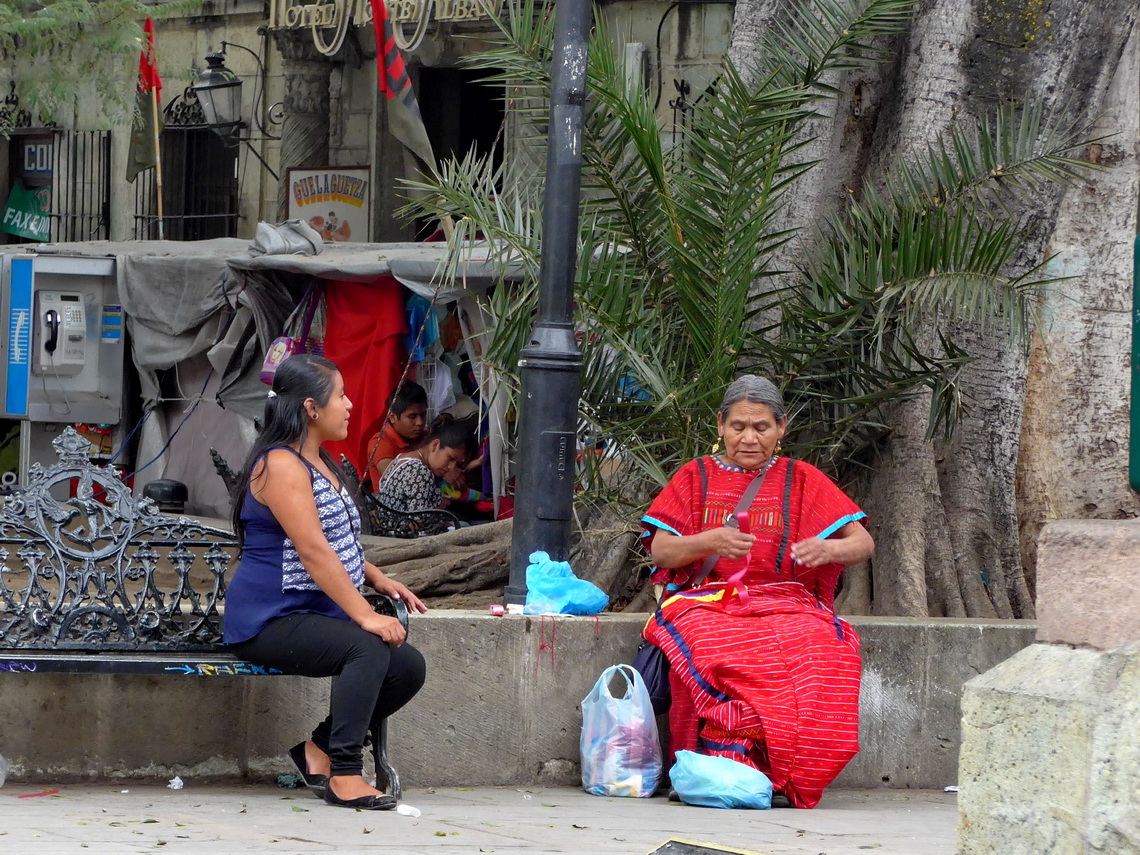
Oaxaca City is famous for Monte Alban, an UNESCO world heritage site on top of a flat mountain. It is the ancient capital of the Zapotec people founded 2,500 years ago. Its peak significance was about between AD 300 and AD 700 with approximately 25,000 inhabitants.
We interrupted our stay in Oaxaca City to go for several days to Mexico City because Marion's brother Tommy had to fly back to Germany. It was a pleasant 6 hours drive with comfortable ADO buses. In Mexico City we met the nice couple Diane and Dave from northeast US. They were also going to Oaxaca City where we had a fantastic lunch in the restaurant Marco Polo close to the Benito Juarez memorial (GPS coordinates: N17° 04.136' W96° 43.126'). Diane presented proudly her dictionary about the local indigenous language Chintanteco. We had a lot of fun - Thank you so much Diane and Dave.
Our car was banging sometimes on the back right side. The rear rubber buffer were in a bad shape and we got them from Volkswagen Oaxaca (GPS coordinates: N17° 02.169' W96° 42.716). Thanks to the website iOverlander we found the workshop Unillantas De Oaxaca/BFGoodrich (GPS coordinates: N17° 03.242' W96° 42.857') which did a splendid job to change the buffers and to align our car with state of the art equipment.
Our first place on Oaxaca's Pacific coast was Zipolite / Puerto Angel where we intended to stay two, three days. Indeed we spent one week on the campsite Cabanas La Habana directly on the beach (GPS coordinates: N15° 39.796' W96° 30.992'). Beneath us were Barbara and Uli from northern Germany, which we met the second time. We had such a good time together - Thanks a lot Barbara and Uli.
Maybe 1.5 kilometers wide Playa Zipolite is unique in Mexico and Latin America. Some nudes of very different ages and nations, some people with sparsely bathing suits and some with nearly all clothes populate the beach and paddle in the warm water of the Pacific Ocean. Different and strange smells are wafting around - the prices for all kinds of drugs are extremely low. Nearly everybody smiles and is happy - a really peaceful atmosphere.
We did two excursions from Playa Zipolite. The first one to marvelous Playa Estacahuite on the eastern side of Puerto Angel. Snorkeling was excellent and we enjoyed delicious seafood there. The second one was to explore the beaches of Mazunte and San Agustinillo - also beautiful but with a different mood like most of all other beaches in Central America.
The largest town on Oaxaca's coast is Puerto Escondido with all shops and facilities. We stayed at the elderly Lady Edda who manages a trailer park with cabanas above 2.5 kilometers wide beach Playa Zicatella and close to the city center (GPS coordinates: N15° 51.506' W97° 03.465'). An interesting path along the shore leads to the western bays with other beautiful beaches like Playa Manzanillo.
Impressive Laguna Mantialtepec is few kilometers northwest of Puerto Escondido. La Alejandria provides a good campsite directly on the lake and offers kayaks to rent (GPS coordinates: N15° 56.349' W97° 09.907'). We spent 3 hours in the late afternoon on the lake and saw some nice birds but it was not as spectacular as the lagoon on Jose's campground in Puerto Arista (see above).
Another highlight of Oaxaca's Pacific coast is Chacahua. It is a small village on the mouth of the laguna with the same name. Public transportation is possible by boat and jeep on a rough dirt road from the little village El Zapotalito on shore of Laguna de Pastoriá. In El Zapolito we could spent the night and park our car safely on the premises of a friendly family for little money (GPS coordinates: N15° 59.296' W97° 32.968'). On the mouth of Laguna Pastoriá are the huts of Cerro Hermoso on foot of a 200 meters high mountain with the same name. A good path leads from the western side of the mouth to its summit.
For more pictures, please click here For a map of our itineraries, click here
To download the GPS coordinates files of Oaxaca and Chiapas, click here
